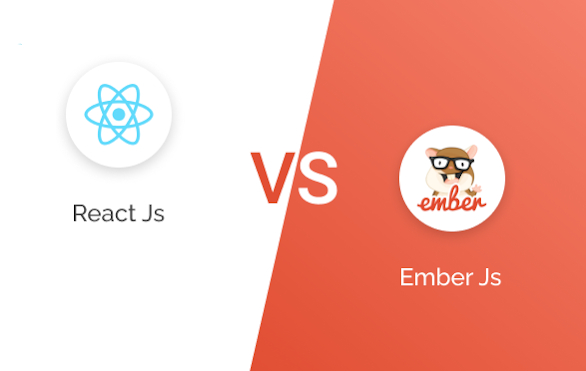Ember vs React: Which JavaScript Framework is Right for You?
Each framework’s team has specific goals
Ember's team has three goals in mind. First, they aim to produce a framework that just works, meaning that it should be intuitive and easy to learn, as well as being compatible with the latest web standards. Secondly, they want Ember to provide superior performance without sacrificing its ease of use. Finally, the Ember team wants their framework to provide excellent developer experience by providing tools such as debugging tools and code scaffolding that facilitate rapid application development.
React's team has two main goals.
Market Share Comparison – Ember.js vs React
Ember.js was created in 2011 by Yehuda Katz and Tom Dale, while React was developed in 2013 by Jordan Walke. Angular was released in 2009 and maintained by Google. All three are open-source frameworks with a large number of contributors. The main difference between the three is their level of abstraction, with Ember being the most abstract, Angular being slightly more abstract than React and React being the least abstract of all three. React also supports only one way to do one thing (function), as opposed to Ember’s two-way binding system or Angular’s change detection. Lastly, React does not have templates like Angular and Ember. Instead it relies on JSX, which uses HTML tags in order to define components. While this may seem less flexible at first glance, it actually has its advantages.
For example, if you need data from an external source (such as an API) then you can use the fetch function from your browser without any problems. Furthermore, using JSX doesn’t require any knowledge about templating languages such as Handlebars that would be necessary in Ember and Angular respectively. So, if you want something simple yet powerful and easy to learn, then React is the right choice.
React.js trends and statistics
React.js has been making waves since its release in 2013, and it's not hard to see why. The library has a much simpler API than Angular or Ember, which makes it easier to get started with. In addition, the library is backed by Facebook, which means that you can trust that the code will be updated on a regular basis. But what if you're still not sure which of these frameworks is right for your project? That's where we come in. We've put together this handy comparison guide so that you can decide!
What are your needs?
If you need an application that integrates easily into an existing ecosystem, then Ember might be best. It integrates seamlessly with Ruby on Rails, after all. If you need more features out of the box, then Angular might be better suited to your needs. However, if you want a clean and easy interface (that also happens to integrate well with Node) then React is probably the way to go! Check out our blog post on React.js trends here
Ember.js trends and statistics
According to Stack Overflow's 2018 survey, Ember.js was ranked as the 3rd most popular framework, with 9% of respondents saying that they use it. That puts it behind Angular and React, but ahead of Vue.js and AngularJS. It also has a strong following on GitHub. From August 2017 to January 2019, there have been about 47,000 commits by almost 6,000 contributors on GitHub.
The top five contributors are Yehuda Katz (13%), Tom Dale (8%), Rick Olson (7%), Erik Bryn (6%), and Nathan Hammonds (5%). The four projects currently in the top 10 on GitHub are ember-cli, ember-data, ember-simple-auth, and ember-router. Compared to Angular, which took over 2 minutes on average to load pages, Ember took less than 30 seconds. However, both were well under React's 12 seconds. One downside of Ember is its lack of customizability when compared to React and Angular. However, many developers prefer its stability and performance over those frameworks' customizability features . If you need more customization, you may be better off using one of these options.
- Ember is third on stack overflow in terms of popularity
- There are 47,000 commits made by 6,000 contributors on GitHub
- Ember loaded pages faster than Angular or React
Framework vs Library, Ember vs React
Ember.js and React.js are two front-end JavaScript frameworks that are both lightweight, scalable and powerful. Ember has long been considered the most popular framework of its kind, but in recent years has been challenged by newer contenders such as React. This comparison will take a look at how these two stacks compare to one another in terms of functionality and ease of use, so that you can decide which framework suits your needs best.
Ember.js is an open-source MVC web application framework built with Ruby and JavaScript (jQuery). The syntax of this library comes from Ruby, while libraries like Handlebars provide syntactic sugar over standard HTML templating. Templates are processed by the server before being sent back to the client where they're rendered with data from model objects and views created on the server side.
Conclusion
Ember and Angular are both fantastic frameworks that can help you build a successful web application, but they each have their own strengths and weaknesses. Be sure to consider which framework will be the best fit for your project before diving in head first. Once you’ve chosen the right framework, Hire Web Developer to get it done!




Comments
Post a Comment